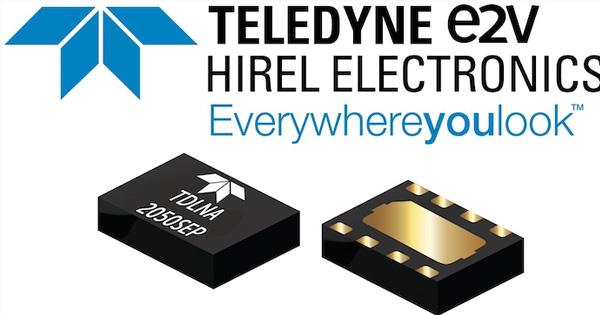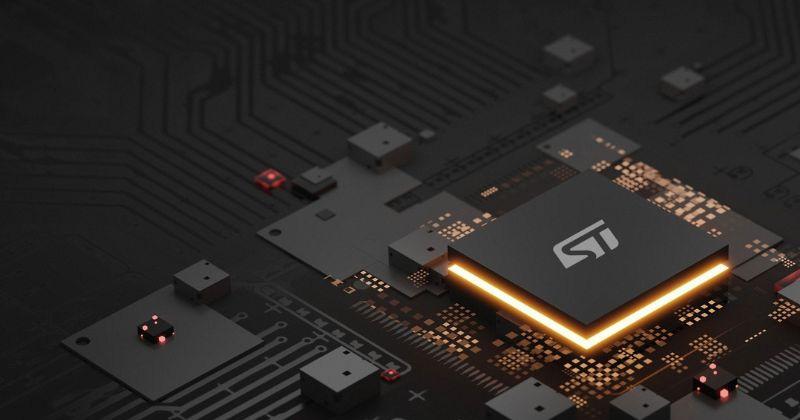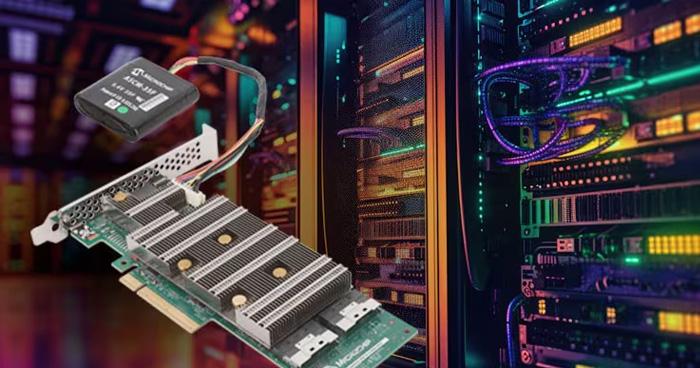
13 kinds of sensors in mobile phones and what are recorded by the sensors
13 kinds of sensors in mobile phones and what are recorded by the sensors
The sensor in a phone refers to the components of the phone that can detect factors such as distance, light, temperature, brightness, and pressure. These sensors are becoming smaller and more efficient while also becoming more affordable, just like all electronic components. Their performance is increasing steadily, contributing to the advancement of technology in mobile devices.
What Sensors Are in a Smartphone?
1.What is a cell phone sensor?
The sensor in a phone refers to the components of the phone that can detect various measurements, such as distance, light, temperature, brightness, and pressure. These sensors are continuously advancing in technology, becoming smaller yet more powerful while also becoming more affordable, just like all electronic components.
The program software in mobile phones analyzes the data acquired by these sensors to create numerous apps that make social networking, financial transactions, sports tracking, entertainment, and learning extremely convenient for users.
2.What sensors are there in smartphones?
While sensors have traditionally been used for physical measurement purposes, they now have the capability to convert measurements into valuable data information that can be utilized by applications or extracted separately. The rapid evolution of smartphone technology and sensor technology is truly remarkable at present. Mobile phone sensors have the potential to greatly impact our everyday lives.
The type and number of embedded sensors in a smartphone largely depend on the specific model of the phone. It's important to note that all these sensors are related to movement. Some common examples of mobile phone sensors include:
Accelerometer
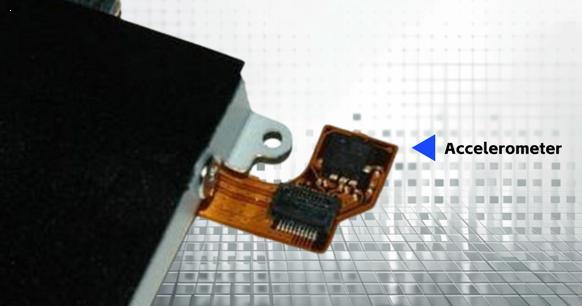
While the concepts of an acceleration sensor and a gravity sensor may seem similar, it's important to note that they are not the same. The acceleration sensor measures acceleration values in three dimensions - x, y, and z - and primarily detects instantaneous acceleration and deceleration. For example, it can measure the speed and direction of a mobile phone. When a user holds the phone and moves it up and down, the acceleration can be recorded to sense changes in direction. By counting these changes back and forth, the sensor can calculate the number of steps taken. Additionally, this sensor is also used to trigger unique commands in gaming applications, as well as for everyday functions such as shaking tunes or switching on/off mute settings.
It's worth noting that while the consumption of power by an acceleration sensor is minimal, its accuracy may be lower compared to other sensors. That being said, it is commonly found in mobile phones where it serves to count steps accurately and determine which way the phone is facing."
G-Sensor
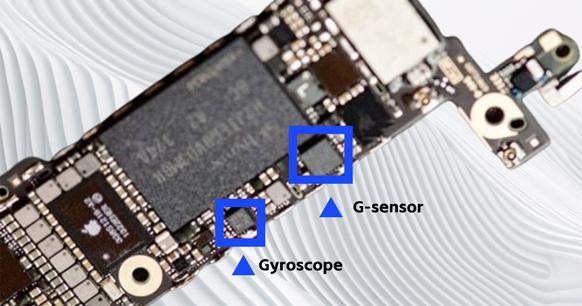
The piezoelectric effect was utilized to accomplish this task. The horizontal direction is determined by calculating the voltage created in two perpendicular directions, with a weight integrated within the gravity sensor alongside the piezoelectric sheet. This feature enables users to switch between horizontal and vertical screen orientations on a mobile phone.
In certain games, such as balance balls and racing games, gravity sensors can be used to provide more interactive control for an enhanced gaming experience.
Ambient Light Sensor
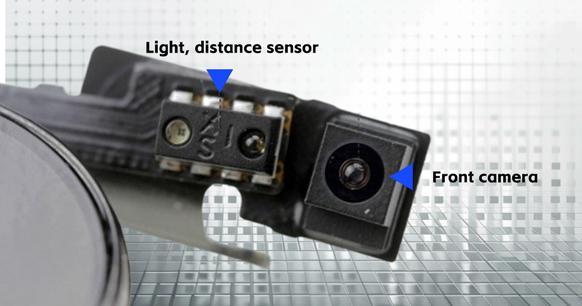
The light sensor resembles the eyes of a smartphone. Just as our eyes adjust to different lighting conditions, the light sensor allows the phone to detect ambient light intensity and automatically adjust the screen brightness accordingly. Given that the screen is typically one of the most power-consuming components of a smartphone, utilizing a light sensor to regulate screen brightness can significantly extend battery life. Additionally, it can be used in conjunction with other sensors to determine if the phone is in a pocket, preventing accidental touches.
Proximity Sensor
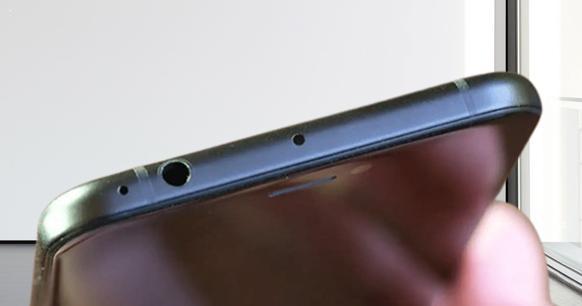
The proximity sensor consists of an infrared LED light and a light detector that can detect infrared radiation. It is positioned near the mobile phone's earpiece. When the phone is held close to the ear, the system recognizes that the user is making a call and automatically turns off the display screen to prevent any accidental interference during the conversation. The invisible infrared light emitted by the LED lamp is picked up by the light detector after being reflected by nearby objects, which explains how this distance sensor operates. In most cases, this sensor works in conjunction with a light sensor.
Magnetism Sensor

The magnetic field sensor is able to detect the strength and direction of the magnetic field by measuring the planar magnetic field with magnetoresistance. This technology is commonly used in common compass or map navigation to assist mobile phone users in achieving accurate positioning.
Additionally, the magnetic field sensor allows for determining the magnetic field intensity of the mobile phone in the x, y, and z directions. By rotating your cell phone until only one direction has a non-zero value, it will point to the south. Many compass applications on mobile phones use data from this sensor. Furthermore, based on variations in magnetic field strengths in all three directions, the exact orientation of the mobile phone can be calculated within three-dimensional space.
Gyroscope
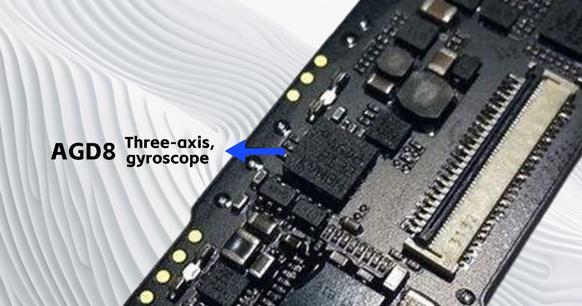
The gyroscope is a device that can measure the angular velocity of movement along one or more axes, and it is an excellent complement to MEMS accelerometers. By combining the accelerometer and gyroscope sensors, system designers can track and capture the entire motion in 3D space, providing end users with a more realistic user experience, precise navigation system, and other features. The role of the gyroscope extends to functions such as the mobile phone's "shake and shake" feature (for example, shaking the phone to draw lots), somatosensory technology, and adjustment/detection of VR viewing angles.
Some detecting games require the use of a gyroscope sensor, bringing about a revolutionary change in mobile game interactivity. Users now have the ability to provide feedback to games through multi-directional body movements combined with simple button inputs.
In most cases, a typical setup for a mobile phone includes a three-axis gyroscope capable of measuring displacement changes in six directions.The three-axis gyroscope determines the direction of rotation of the present mobile phone by measuring its angular acceleration in the x, y,
and z dimensions. This change in angular acceleration allows for activities such as flipping
the phone or answering calls.
GPS position sensor

"There are currently 24 GPS satellites orbiting the globe in a precise orbit, continuously broadcasting their position coordinates and timestamps to the entire world. The GPS module in your mobile phone uses this information to calculate the distance between your device and the satellite based on the time difference between when the satellite transmits its coordinate and when it is received by your phone (the total number of seconds so far). This technology can be utilized for navigation, location services, measuring speed, as well as calculating distance.
The primary function of the GPS module is to receive satellite coordinate information through its antenna, assisting you in locating the satellite. With the widespread use of 4G networks, GPS is being increasingly integrated into various contexts such as collaborating with smart hardware for remote position monitoring or locating a misplaced device."
Fingerprint sensor
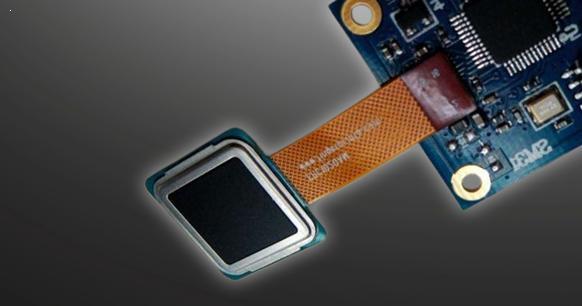
Currently, capacitive fingerprint sensors are the most common, but ultrasonic fingerprint sensors are also becoming increasingly popular. In a capacitive sensor, the finger acts as one pole while the silicon chip array serves as the other pole. The microcurrent generated between the body's electric field and the capacitance sensor is used to detect the peaks and valleys of the fingerprint, forming a capacitance height difference that explains the fingerprint pattern.
On the other hand, ultrasonic fingerprint sensors operate on similar principles to optical ones but are not affected by sweat or oil and can recognize fingerprints more quickly. They can be used for unlocking, encrypting, making payments in mobile phones, and more. Typically employed as a security measure, these sensors automatically collect user fingerprints to help protect privacy.
Hall Sensor
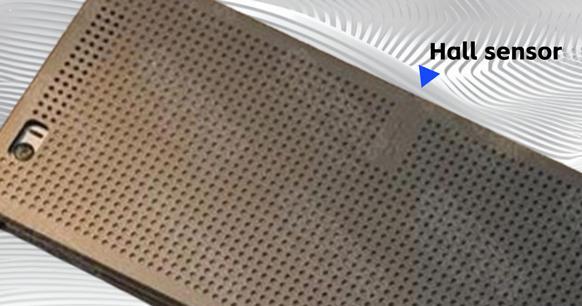
The Hall magnetoelectric effect is the principle behind the functioning of a Hall sensor. When an electrical current passes through a conductor in a magnetic field, the magnetic field creates a force at both ends of the conductor that is perpendicular to the direction of electron movement. This results in the generation of a potential difference.
The main purpose of incorporating a Hall sensor into mobile phones is to allow users to use smart leather cases, specifically magnetic leather cases. Once the leather case is attached, it creates a small window interface for receiving calls or reading messages. It's as simple as that!
Barometer
By connecting a thin film to either a transformer or capacitor, changes in air pressure will result in alterations to resistance or capacitance values which allows for measurement of air pressure data. While GPS can also be used for determining altitude, it may have an inherent 10-meter margin of error. This error can be corrected down to approximately 1 meter with an air pressure sensor, thus improving GPS accuracy (Global Positioning System).
Furthermore, having an air pressure sensor on your phone can prove useful when certain external applications require measurements of air pressure. For example, you could track how many flights of stairs you've climbed using the iOS health app.
Heart rate sensor
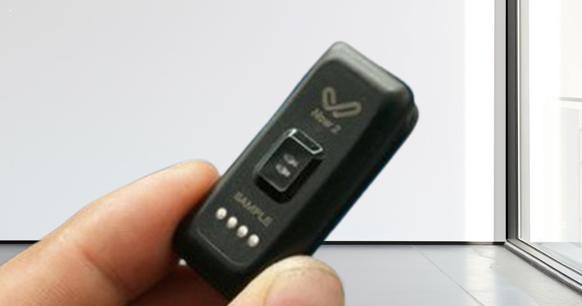
The brightness (the depth of the red light) fluctuates periodically when the heart pumps blood to the capillaries while the finger is illuminated by a high-brightness LED light. Then, these regular changes are captured using a camera and the data is sent to the phone for calculation. This helps in determining the heart's contraction frequency and the number of heartbeats per minute.
To determine the user's heart rate, we use the number of pulses per minute of the blood vessels on their finger. Wearable gadgets with heart rate sensors are becoming more prevalent.
Blood oxygen sensor
The absorption ratio of hemoglobin and oxygenated hemoglobin in red light differs significantly. By illuminating the finger simultaneously with infrared and red LEDs, we can analyze absorption spectra of reflected light to determine oxygen concentration in blood. This has wide applications in sports and health monitoring.
We also have UV sensors which measure UV intensity by sensing photoemission action from semiconductors under UV light exposure. This has common applications in sports, health, as well as environmental radiation measurement.
It should be noted that there aren't many mobile phones nowadays that use this type of sensor, and further investigation into its measurement stability is needed.
Temperature Sensor
Many smartphones nowadays are equipped with temperature sensors, and some even have multiple sensors. These sensors play a vital role in monitoring the internal temperatures of the phone and its battery. If a certain component's temperature rises too high, the phone will automatically shut down to prevent any damage. In addition to this, the temperature sensor can also detect changes in outdoor air temperature as well as the user's body temperature.
The seven types of sensors mentioned above are commonly found in modern smartphones, although Hall sensors, heart rate sensors, blood oxygen sensors, and UV sensors are more commonly found in smart wristbands or high-end mobile phones.
Mobile phones have transcended their original purpose as mere communication devices; they have evolved into all-purpose personal assistants. People expect their mobile phones to be versatile enough to perform various functions – both practical ones that are used daily and less frequently utilized but still valuable ones. It is likely that future mobile phones will become increasingly integrated with numerous different types of sensors."
3. What information do they capture?
Explaining this can be a bit tricky. Your phone is equipped with a wide range of sensors, and depending on your needs, you may choose to activate or deactivate specific sensors.
It's important to note that the sensor itself is just a piece of hardware; however, the way in which mobile phone manufacturers and app developers handle the data received from these sensors deserves our attention.
Over the past 12 months, there have been numerous concerns surrounding the data collected and stored by these types of sensors. For example, a large number of high-precision location sensors can potentially reveal your exact whereabouts. These data not only pinpoint your location on a map but can also track your movements over an entire year using an accelerometer. This same concept applies to pedometer apps - while some phones come with built-in professional-grade stride sensors, others use various data points throughout the day to plot your whereabouts.
The significance of microphones has become increasingly apparent as more tech companies and app developers offer features like personal assistants. This means that speech recognition, analysis, and recording technology can understand what you are saying better than ever before - thereby enhancing the capabilities of smart assistants. However, many people are unaware that Google stores this information after using voice search feature. Once data from these sensors has been collected, software will conduct an in-depth analysis into your settings allowing for certain apps or services to be opened or closed while being able to adjust access privileges as necessary.
Certainly there is outrage over unauthorized tracking and recording activities; however it must be acknowledged that we often inadvertently grant app programs access without realizing it because we tend not pay close attention when prompts appear.
4. Should we be concerned about these sensors?
One of the most immediate concerns is the increasing integration of sensors into mobile phones, which may potentially lead to increased surveillance of individuals. However, should we really be worrying about this? It's crucial for us to pay closer attention to our own permissions, regardless of whether technology companies and app programs may secretly gather our personal data. Unlike Snowden, we can't simply dismantle our phones or remove the battery in order to prevent information collection, as much of it is done for profit or advertising purposes rather than malicious intent. Most often, our personal data is collected for financial gain and the majority of information gathered through mobile phones serves commercial interests. Some businesses seek insight into our whereabouts and preferences in order to tailor specific advertisements towards us. While some individuals have grown accustomed to this personalized marketing strategy, others are understandably outraged by it.
Ultimately, people have the right to decide whether they want their personal data collected based on their individual circumstances—unless a company fully discloses its intentions for collecting such data and commits to responsibly maintaining it.
Certainly, it is important to acknowledge the possibility that sensor data may be used for illicit purposes. Unfortunately, by the time we become aware of this reality, it may already be too late. A recent study has highlighted a concerning finding - that motion sensor data can potentially reveal PIN numbers, presenting a hidden risk. The issue of preventing fraud in relation to sensor data is still very much an ongoing concern, reminiscent of the measures we take with our credit cards. This is not an isolated incident, which is why it's crucial to raise awareness about the various sensors present in mobile phones.
It's advisable to only grant access to reputable organizations and apps; ensuring that any captured or recorded sensor data remains safe and secure. While it's convenient that Android no longer presents us with a permission list during app installation (let's face it - most of us don't read all those terms anyway), instead prompting us for approval when accessing specific functions for the first time.
For example, a map application might legitimately require your location information; however, if a flashlight app attempts to access this same information, caution should definitely be exercised. Always verify whether third-party programs are performing their claimed functions accurately. Malicious software may try to tempt you into granting authorization under false pretenses.
You can also check which data an application on your phone will access. The list of programs can be found in the settings menu, and you can review it item by item to ensure that you haven't authorized anything incorrectly.
If you are comfortable with a corporation using your personal information to tailor their services, then there may not be cause for concern. However, it's important to note that more and more biosensor-collected health data is being covertly auctioned off, presenting us with a potential dilemma. When we use sensors to track personal data, such as pulse and heart rate, there is a greater risk of apps leaking personal information compared to mobile phone companies.
Now is the time for everyone to consider whether they have control over their location data being sold to restaurants or shopping centers for advertising and marketing purposes. This issue only scratches the surface of potential privacy concerns. As technology becomes more advanced, smaller, and prices continue to fall, protecting our personal privacy from exposure will become increasingly challenging. If you truly do not want your personal information collected or falling into the wrong hands, it's essential to carefully monitor your authorized programs and obtain installation programs from legitimate sources.


